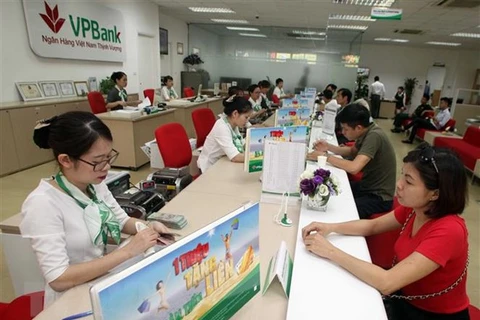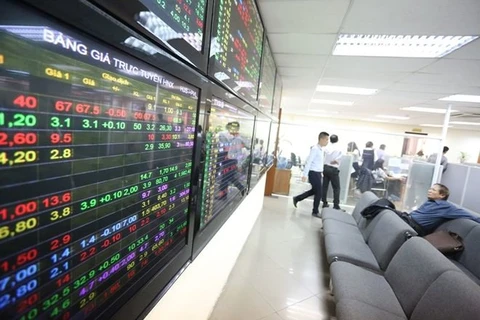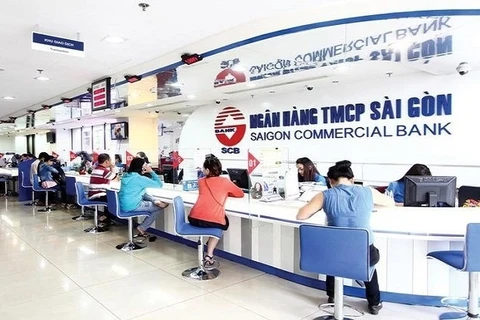Hanoi (VNS/VNA) - The State Bank of Vietnam (SBV) will rank credit institutions and foreign bank branches operating in the country in a move to ensure the safety of the banking system and protect legitimate rights of depositors.
Under Circular No. 52/2018/TT-NHNN, which will take effect from April 1 this year, commercial banks, financial companies, financial leasing firms, co-operative banks and branches of foreign banks will be rated. As for commercial banks, the SBV will classify them into two groups: large-sized commercial banks with total assets of more than 100 trillion VND (4.27 billion USD) and small-sized banks with total assets of below 100 trillion VND.
The credit institutions and foreign bank branches will be classified in five groups – A, B, C, D and E – with A representing the best performing and E the worst.
The classification will be made based on quantitative and qualitative criteria.
Qualitative criteria will measure the health of the institutions’ operations through statistics on assets and capital, as well as financial and business reports audited by independent auditors, while quantitative standards will gauge compliance with legal regulations of the institutions.
The criteria will be weighed in accordance with how important they are to the institutions’ performance and the supervision requirement.
The criteria are divided into six groups – capital adequacy, asset quality, management and earnings, as well as liquidity and sensitivity to market risk – called the CAMELS rating system – a recognised international rating system.
Before June 10 every year, the SBV’s Banking Supervision Agency will submit the ranking results of credit institutions and foreign bank branches of the preceding year to the SBV’s Governor for approval, which will be done before June 30.
However, according to the SBV, the ranking results will not be publicised due to the delicacy of the issue. The central bank will only send the rating result individually to each credit institution, asking the institution to address any shortcomings.
Responding to a question on why the ranking results will not be publicised, the SBV said that unlike the objectives of international credit rating organisations, these ranking results will only be used to provide timely warning of risks so that measures can be taken to prevent the fall of an institution and the whole system, which will help protect assets and rights of depositors.
According to the SBV, central banks and financial supervisory agencies in many countries also do not publicise their ratings of commercial banks. They just make public periodical rating results of international credit rating organisations, which are a reference for investors and depositors to make investment decisions, but clearly citing they are not responsible for the ratings.
However, banking expert Phan Minh Ngoc told cafef.vn that it was necessary to make public the rating results to ensure transparency of information and operation of credit institutions as the European Central Bank (ECB) did with banks of its member countries.
According to Ngoc, all related parties, from the people, the Government as well as domestic and foreign investors have legitimate rights to know about transparent information of credit institutions and foreign banks’ branches in the country while the information can only be obtained in a quality and objective way from the SBV.
“Transparency in the operational quality of credit institutions will not be guaranteed if the rating results are not publicised,” Ngoc said, adding that without the results, the public is not fully aware of the shortcomings and weaknesses of credit institutions to pressure them to resolve it.
Currently, credit institutions operating in Vietnam are ranked by international credit rating organisations such as Standard & Poor’s, Moody’s and Fitch, based on international standards.-VNS/VNA
Under Circular No. 52/2018/TT-NHNN, which will take effect from April 1 this year, commercial banks, financial companies, financial leasing firms, co-operative banks and branches of foreign banks will be rated. As for commercial banks, the SBV will classify them into two groups: large-sized commercial banks with total assets of more than 100 trillion VND (4.27 billion USD) and small-sized banks with total assets of below 100 trillion VND.
The credit institutions and foreign bank branches will be classified in five groups – A, B, C, D and E – with A representing the best performing and E the worst.
The classification will be made based on quantitative and qualitative criteria.
Qualitative criteria will measure the health of the institutions’ operations through statistics on assets and capital, as well as financial and business reports audited by independent auditors, while quantitative standards will gauge compliance with legal regulations of the institutions.
The criteria will be weighed in accordance with how important they are to the institutions’ performance and the supervision requirement.
The criteria are divided into six groups – capital adequacy, asset quality, management and earnings, as well as liquidity and sensitivity to market risk – called the CAMELS rating system – a recognised international rating system.
Before June 10 every year, the SBV’s Banking Supervision Agency will submit the ranking results of credit institutions and foreign bank branches of the preceding year to the SBV’s Governor for approval, which will be done before June 30.
However, according to the SBV, the ranking results will not be publicised due to the delicacy of the issue. The central bank will only send the rating result individually to each credit institution, asking the institution to address any shortcomings.
Responding to a question on why the ranking results will not be publicised, the SBV said that unlike the objectives of international credit rating organisations, these ranking results will only be used to provide timely warning of risks so that measures can be taken to prevent the fall of an institution and the whole system, which will help protect assets and rights of depositors.
According to the SBV, central banks and financial supervisory agencies in many countries also do not publicise their ratings of commercial banks. They just make public periodical rating results of international credit rating organisations, which are a reference for investors and depositors to make investment decisions, but clearly citing they are not responsible for the ratings.
However, banking expert Phan Minh Ngoc told cafef.vn that it was necessary to make public the rating results to ensure transparency of information and operation of credit institutions as the European Central Bank (ECB) did with banks of its member countries.
According to Ngoc, all related parties, from the people, the Government as well as domestic and foreign investors have legitimate rights to know about transparent information of credit institutions and foreign banks’ branches in the country while the information can only be obtained in a quality and objective way from the SBV.
“Transparency in the operational quality of credit institutions will not be guaranteed if the rating results are not publicised,” Ngoc said, adding that without the results, the public is not fully aware of the shortcomings and weaknesses of credit institutions to pressure them to resolve it.
Currently, credit institutions operating in Vietnam are ranked by international credit rating organisations such as Standard & Poor’s, Moody’s and Fitch, based on international standards.-VNS/VNA
VNA

























